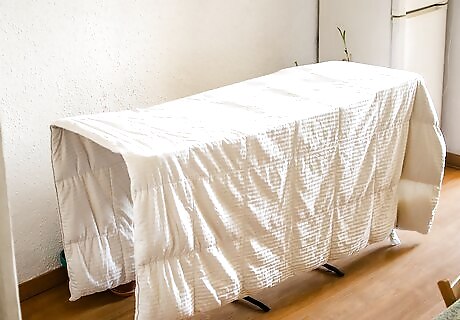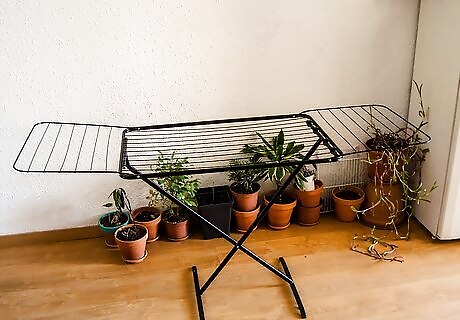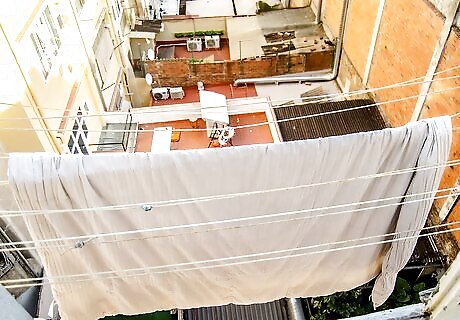
views
Drying with a Machine Dryer

Choose a dryer that’s big enough to handle the job. While it's easier to dry your bedding at home, most people don’t have a large enough dryer to handle items like comforters. Going to a laundromat and using a large capacity dryer will speed up the drying process. If you don't have a nearby laundromat, make sure your dryer at home can fit the comforter, and take it out often make sure the heat is being distributed throughout.

Set the dryer on a low heat setting. Even in a large dryer, a bulky comforter may become stuck in one place for a while. By setting the dryer on low, you can reduce the chances of burning the comforter. Always check the tag on your comforter. It may be possible to dry your comforter at a slightly higher heat.

Add a couple of tennis balls to the dryer. The tumbling tennis balls will help to fluff up the comforter as it dries, preventing it from clumping together. A clean pair of canvas shoes can also do the trick, just remember to remove the laces.

Hit pause on the drying cycle to shake up any lumps. Despite using some clean shoes or tennis balls, your comforter might still get clumped up. By removing the blanket every so often and shaking it up a bit, you can speed up the drying process by ensuring the fluffy down innards are evenly distributed. These tips will help dry your comforter more effectively, but you should still plan on waiting a few hours to get your cover completely dry. While you have the comforter out, check to make sure no areas are burnt or scorched by a dryer that runs hot.
Using the Air Drying Method

Set up an outdoor clothesline for drying your comforter. Using a clothesline to dry your wash is less damaging to the material, and better on the environment. Weather that is warm, dry and windy is very effective at speeding up evaporation and drying items quickly. Direct sunlight may cause colors to fade, so be mindful if you have a colorful down comforter. Check the weather for both rain and humidity. Even if you have a sunny, windy day, high humidity can act as a sauna for your comforter, keeping it from drying.

Find yourself some good outdoor drying racks. If you can't set up a clothesline, a couple of drying racks can be propped outside. Set them slightly apart from one another and spread your comforter out evenly over both. Another upside to drying your blanket outside is that you can come back to them later, as opposed to waiting at a laundromat.

Use an indoor drying rack if necessary. If you don’t have an outdoor space or live in a climate where you can expect rain or humidity, you can also dry your items indoors. Drying indoors is also avoids affecting those with seasonal outdoor allergies, as the blanket is less likely to come in contact with grass or pollen inside. Drying indoors will usually take longer than the other methods listed, but using a large fan next to the drying rack(s) can speed up the process.


















Comments
0 comment